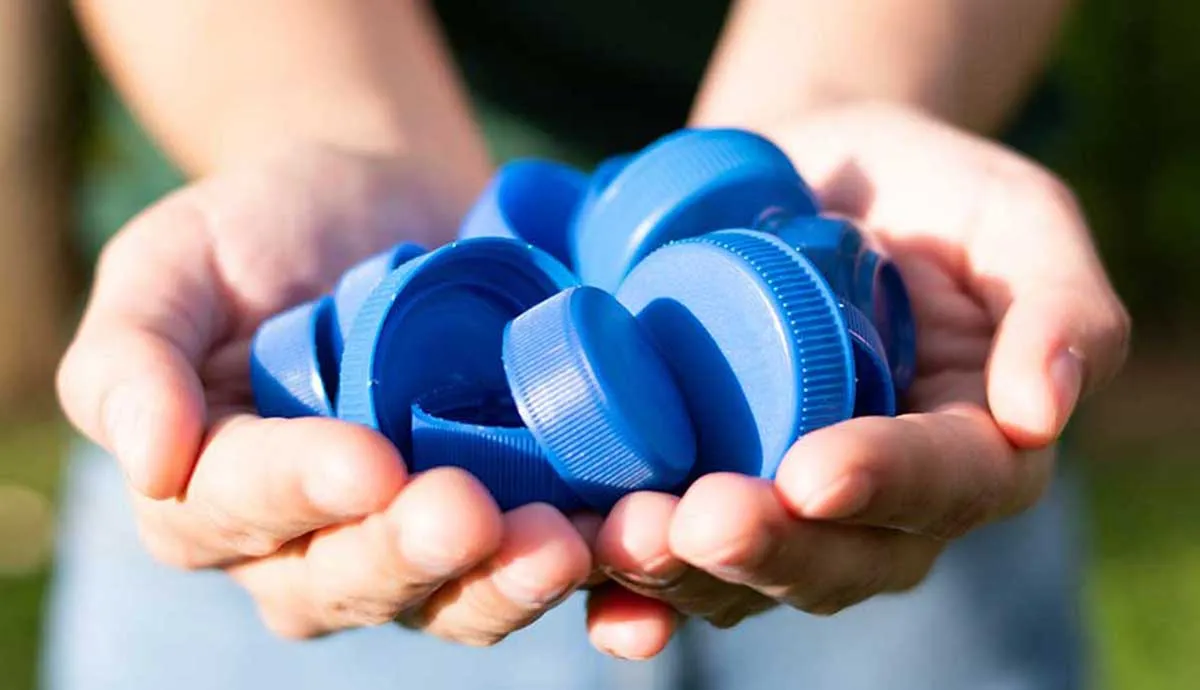Closures are critical to the plastic packaging system because they can protect the contents of the package and provide safety aspects for the consumer. The closure can be the most essential part of the package for the consumer experience.
Bottles and closures have traditionally been made using virgin resin. However, manufacturers are incorporating more post-consumer recycled (PCR) content to meet sustainability goals. This is true not just for bottles, but also for closures such as caps and lids. There is also a shift from polypropylene (PP) to high-density polyethylene (HDPE) closures, where post-consumer resin is more readily available. This shift is improving access to PCR for closures specifically and, as a result, increasing the amount of PCR used across all plastic packaging, including in more challenging situations such as food-contact packaging. This can help brands and retailers reach 2025 sustainability targets and beyond.
There are, however, complexities when using PCR in closures. It can adversely affect quality and performance, impacting functionality and safety. This article will explore these key challenges and offer potential solutions.
Key Challenges
Moving away from virgin resin to using the same grade of PCR, you can expect both processing conditions and product performance to change. This includes specific areas related to viscosity, color and dimensional stability, stress cracking, and organoleptic properties.
1. Viscosity
Challenges:
- Injection and fill pressures will be different with PCR versus virgin resin due to viscosity inconsistencies of the PCR
- Viscosity changes also influence other process parameters, such as hold time in the mold and temperature profiles, impacting the total cycle time of the process
Possible Solutions:
- To compensate for PCR viscosity differences, some limited tooling enhancements can be implemented to regain efficiency. Ensure that cooling in the molds is operating efficiently and is balanced, and plan on revising the injection and temperature profiles
- Additives, such as melt flow modifiers, can be used to recover the loss of physical properties and aesthetics when applying PCR resins
2. Color and Dimensional Stability
Challenge:
- Maintaining brand color equity, part dimensions, and mechanical properties are areas of concern when PCR is included at 30% or more in the molded part. PCR will influence the color of your final article.
Possible Solutions:
- Laser measurements can be used to understand, manage, and predict the performance of PCR in an existing process – these tests should include the duplication of targeted temperature and process profiles
- Select the correct colorants to manage warpage and dimensional stability
- Include nucleating agents to help with dimensional stability
- Choose densely pigmented colorants to help obscure the inherent color of PCR
- Consider additives that help manage recrystallization and cooling in the tooling
3. Stress Cracking
Challenge:
- Stress cracking on living hinges of parts containing PCR is one of the most severe challenges that molders face
Possible Solution:
- Impact modifiers can solve this physical property loss by improving the strength of PCR materials
4. Organoleptic Properties (Odor)
Challenge:
- Organoleptic performance is an important concern because most PCR grades are not degassed and can contribute offensive odors to the parts
Possible Solutions:
- Use additive and process technologies to manage odors
- Choose a quality grade of PCR with fewer odor profiles
- Limit the amount of PCR used
Incorporating PCR into closures is reported to reduce greenhouse gas (GHG) emissions by 71% over the use of virgin resin¹. The challenges to do so, however, can seem insurmountable. Fortunately, there are a number of options available to help you effectively use PCR in closure applications. Contact us if you would like to learn more, or talk with one of our product experts about your own PCR challenges.
¹Source: Life Cycle Impacts for Postconsumer Recycled Resins, December 2018 https://plasticsrecycling.org/images/library/2018-APR-LCI-report.pdf

